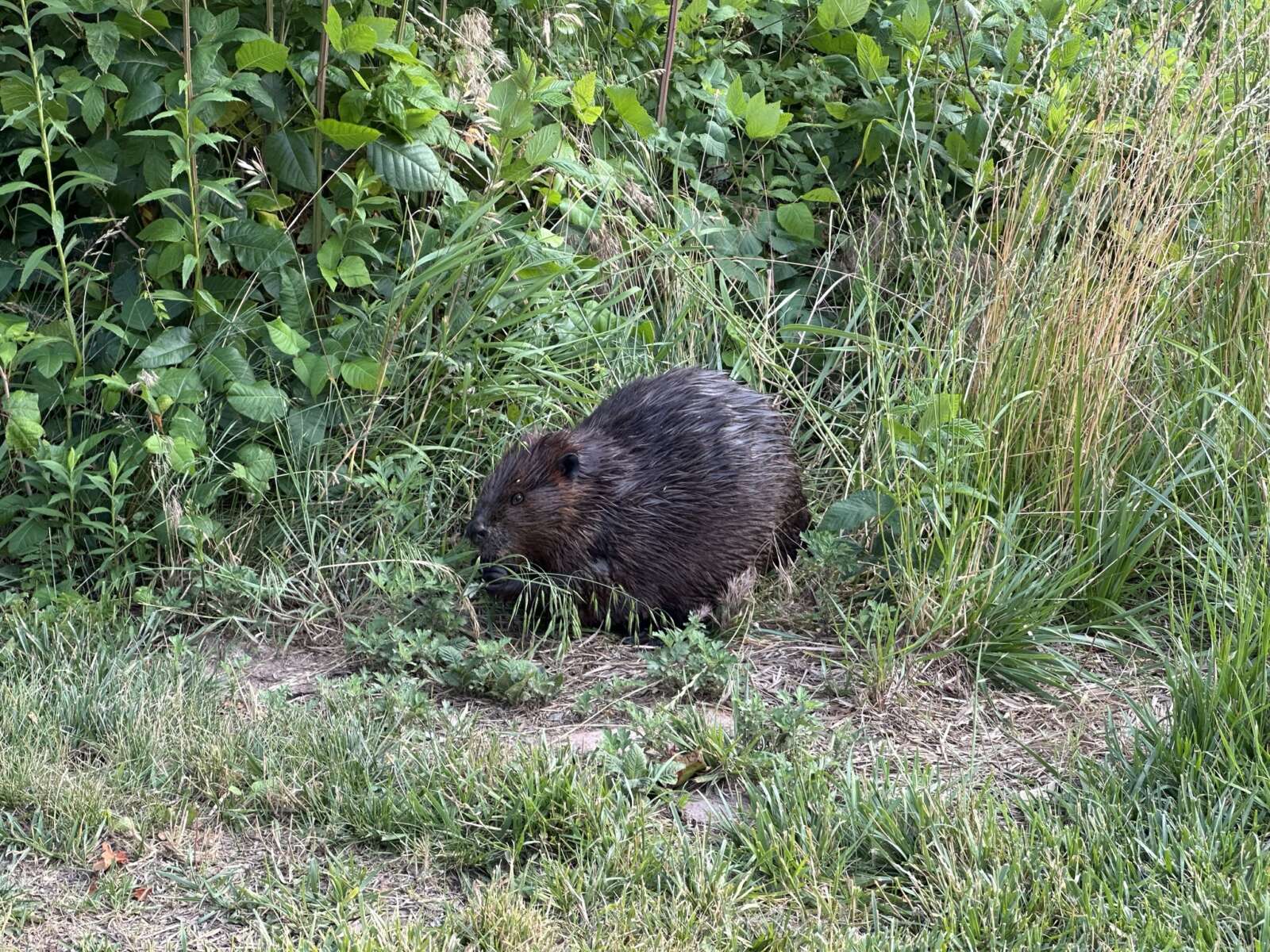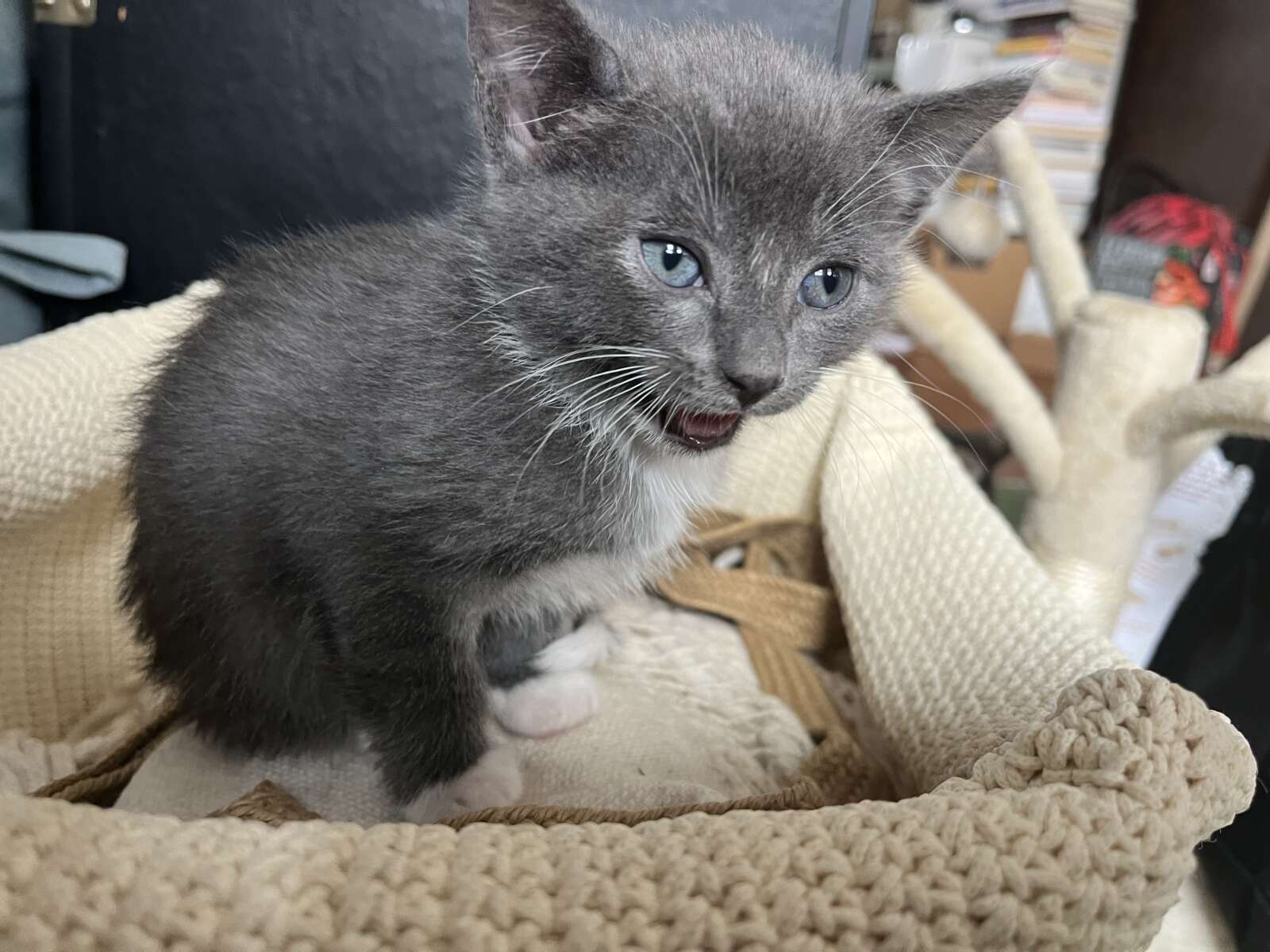This is a sponsored post by Elizabeth Arguelles, veterinarian and owner of Just Cats Clinic at Lake Anne Plaza. It does not represent the views of Reston Now.
In our last article, we discussed what to do with stray cats that you encounter in your neighborhood.
This week, we’ll tackle an issue that is related but that presents very different challenges: how to help feral cats living near your house.
What is a feral cat?
As we mentioned in a previous article, feral cats are felines who have been born and raised in the wild.
Unlike strays (cats that at one time had human owners), feral kitties have had little to no previous contact with humans. Because of this, you should always approach ferals with caution and avoid handling.
What should you do if you encounter a feral cat in your neighborhood?
Before doing anything, make sure that the feline is indeed feral and not lost or a stray. In our last article, we discussed a variety of ways to determine whether a kitty already has a home or has grown up around people. If you suspect that the cat in question might be domesticated, take the proper steps to ensure that it is either returned to its owners or brought to a shelter.
Once you have ascertained that the cat does not have and has not had a human owner, the next step is to take it immediately to a vet for sterilization and a rabies shot. As we have mentioned in past articles, the best way to reduce the number of euthanasias performed at clinics and shelters around the country is to limit the number of unwanted kittens born.
Getting a feral cat to the veterinarian is not an easy process, given that such felines are not accustomed to human contact. Fortunately, animal welfare organizations like Alley Cat Allies and the ASPCA have developed Trap-Neuter-Release (TNR) protocols that are designed to humanely capture feral kitties, get them to the vet without putting them or any humans in danger, and return them to the wild. For more information about how to trap feral cats, the most effective equipment to use, and the best way to bait the traps, please visit AlleyCat.org or ASPCA.org
What is the best way to protect the health of feral cats in the long term?
Providing long-term care to a feral cat is more complicated than it is for a stray kitty, but certainly worth the effort. Feral kitties that are properly cared for can live for ten years or more. Before making a commitment to a feral cat, however, you should ensure that you have the financial means to do so for the cat’s entire lifetime, that arrangements can be made to care for the kitty if you travel or move, and that the area where you live is safe and suitable for cats. If you still want to care for a feral cat or feral colony after considering these issues, here are some steps to take:
Coordinate with neighbors who might already be caring for the cat. You may find that someone else in your neighborhood is already providing food and/or medical care for feral felines living in the area, so make sure that you are not duplicating efforts.
Feed the feral kitty at regular intervals. Leave food and water out for about 30 minutes and then take it away. It is important to be dependable and consistent, so have someone sub for you if you are unavailable. Dry food is better than wet food, as the former keeps longer and attracts fewer insects.
Provide adequate shelter, especially in the winter. Though cats have heavy winter coats to keep them warm, they have trouble drying off if they get wet. Without a proper “house,” a kitty can get hypothermia and die, so giving it a doghouse filled with straw or space in a shed can greatly improve its living conditions. Make sure to properly insulate the structure to provide a warm and dry place for the cat.
Monitor the cat’s health. Check the kitty’s eyes and fur on a regular basis. Its eyes should be clear and without discharge, and its coat should be clean. If you notice anything amiss, contact your vet immediately. Remember to monitor your ferals from a safe distance. If one of the cats does need medical care, use the safe Haveahart traps to catch them.
Watch for other feral cats living in the area. Feral kitties often live in larger groups known as colonies. Though you may not have the time or resources to care for an entire colony, getting the other members sterilized and vaccinated will help ensure that the cats for which you are caring remain healthy. Learn to recognize the cats that are part of the colony so that you can quickly identify any newcomers and get them fixed immediately. Remember Trap-Neuter-Return programs are the BEST way to help feral colonies.
Even though feral cats are not dependent on humans in the same way that domesticated felines are, they can still benefit from our help and care. Life in the wild can be difficult and fraught with disease, potential starvation and numerous risks to life and limb.
With only a minimal investment of time and resources, you can help limit the number of cats ending up in shelters or even euthanized and improve the quality of life for your community ferals.






